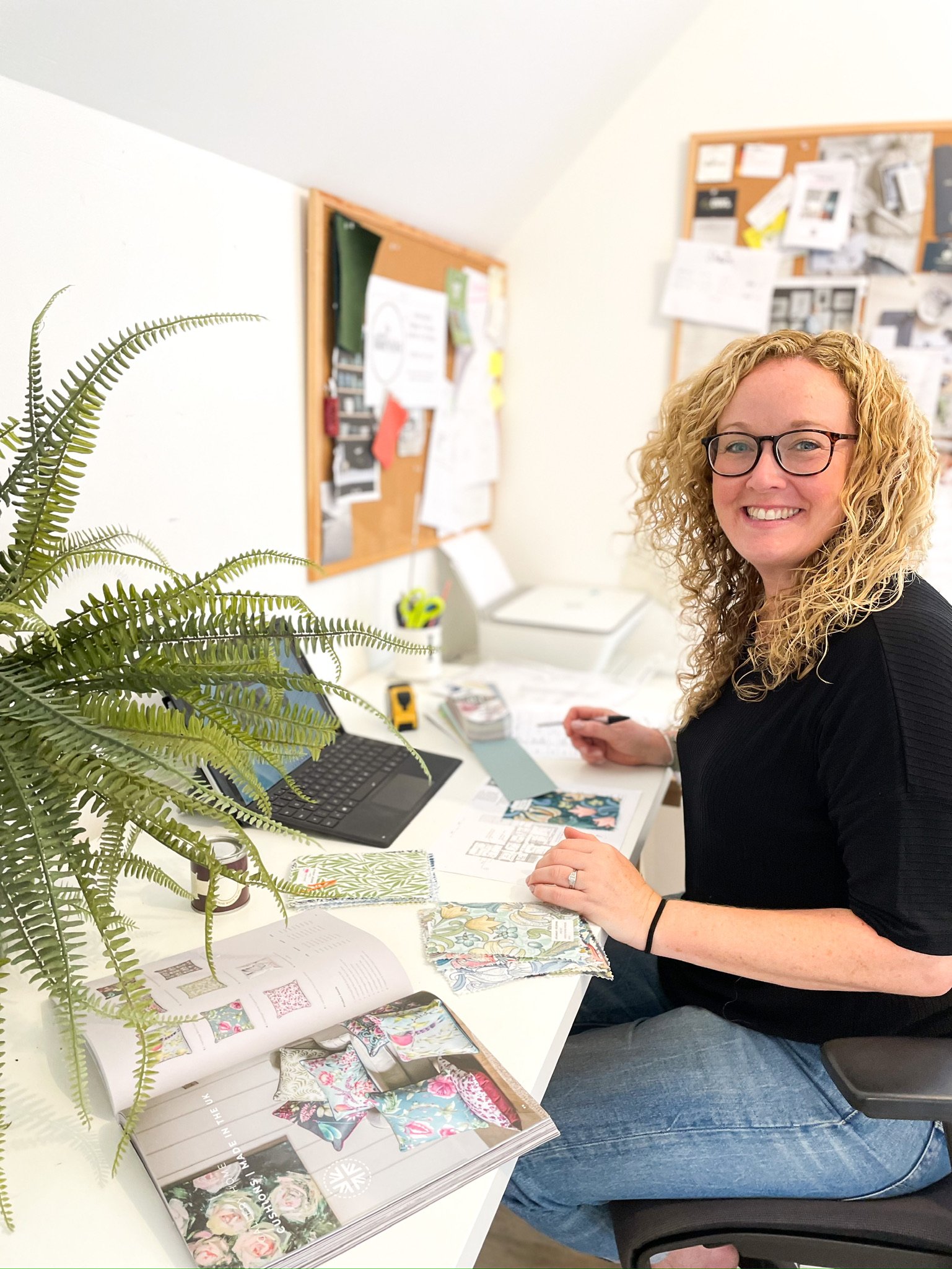Home Design Essentials: How to Style a Beautiful Home Office
The idea of a typical office has changed in today's dynamic workplace, and more people are working remotely. Because of this, it's crucial to have a space that maintains your focus, but that doesn't mean you can't make it pretty. Creating your home office design is essential to boosting your productivity and overall work experience as you’ll most likely be spending a lot of hours here. Your home office doesn’t have to be boring and plain. Therefore, whether you’re an interior designer seeking a place to let your creativity flow or someone requiring concentration with a computer-centric job, I'm here to share my tips on how you can create a stylish and functional home office without breaking the bank.
My desk in the Sussex Home Stylist Studio
Working with the space you have
Perhaps you were asked to work from home following the covid outbreak and then it was made permanent? Or perhaps your company is trialling hybrid working? Maybe you love working from home but want to maximise the space you have? The point here is to realise that not everyone has the luxury of a dedicated room for a home office. While some might consider using a bedroom for a home office, it’s generally advisable to avoid this. The bedroom should be a place of relaxation and rest, and introducing work-related elements might interfere with this. Instead, focus on areas that can be set up as separate, dedicated workspaces. Not having a dedicated room doesn't mean you can’t create an efficient work space. Try utilising spaces like the area under the stairs, a spare room you only use for storage purposes or a basement. If you have a large garden, why not build your own personal office space?
Your space you choose to build your office in should be distinct from your home life. Try to stay away from areas you may spend your downtime, for example a bedroom or the living room. This is because it’ll help you to maintain the professional feeling of working in a normal working environment and help you to keep rooms separate. This also helps because at the end of the day, you can leave all tasks behind in that room and relax in the evenings. With the right furniture and decor, any room can be transformed into a functional home office.
Tailoring Your Workspace to Your Needs
Our lovely Marketing Intern, Bryony, working from home from her University room.
The first step in creating an effective home office is understanding the nature of your work and tailoring your workspace accordingly. For example, as an interior designer, I need plenty of space to store creative materials such as fabric samples and design mood boards. This means investing in furniture with built-in drawers and storage solutions to keep my workspace organised and the desk clutter-free. However, if you work more with a computer, a spacious desk that can accommodate multiple monitors is essential. Ensure your desk is at the right height, and invest in a comfortable chair that supports your posture throughout long work hours. Having a wrist rest underneath your keyboard and mouse can also help to make it more comfortable. You may even want to invest in a standing desk if you don’t want to sit for long periods of time. When finding your perfect desk, brands like Ikea offer smart office furniture that combines functionality with style but at an affordable price. I have a trestle desk, which gives me a lot of work space but also adds a touch of modern elegance to my setup.
Open shelving is a great way of balancing practicality & aesthetics.
Keep in mind when designing your home office, organisation is key. Invest in storage solutions that can accommodate your needs and potential growth. If you know you’re going to need a lot of printed research for a project, make sure your space allows for you to store it. Consider nice looking filing boxes to keep the mess to a minimum on book shelves where you can close the door on the mess This will help you keep your workspace clutter-free and efficient.
Balancing Aesthetics and Functionality
A well-designed home office isn't just about functionality; it's also about aesthetics. Incorporating elements like plants and artwork can enhance the visual appeal of your workspace while contributing to your overall well-being. Studies have shown that having greenery in your workspace can improve air quality and have positive effects on your mental health, so I would definitely recommend adding a plant into your set up. Mental health is so important, check out our tips too look after yourself when working from home in our blog here.
Functionality needs to come first in a home office design. Then layer over the aesthetics.
In addition to plants, personalise your workspace with items that motivate and inspire you. Whether it's travel photos from a holiday, anniversary images with your partner, your favourite artwork, or even a vision board showcasing your goals, these personal touches can create a more enjoyable and motivating work environment. Check out our blog for more ways to add personality into your home.
Lighting
Lighting is a crucial factor in any room, and your home office is no exception. Natural light is ideal, so if possible, position your desk near a window. However, be cautious about south-facing windows that might lead to excessive glare and heat.
For task lighting, a well-placed desk lamp can prevent eye strain and improve focus. Combining task lighting with ambient lighting, such as ceiling lights, can create a well-lit and inviting environment. If you're dealing with a dimly lit room, consider swapping out pendant lights for brighter spotlights to make the space feel more vibrant. You want your bulbs to be bright white, not warm white.
Finally remember that your home office is a reflection of your professional identity, so take the time to craft a space that truly speaks to you. If you’d like any further advice, drop us a line, we’d love to help.




